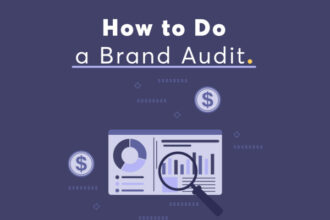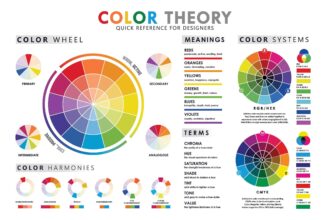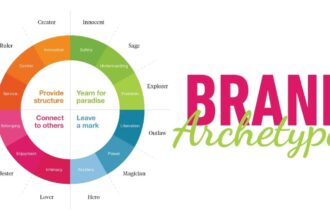The Psychology Behind Landing Pages That Convert Like Crazy
Creating landing pages that convert like crazy isn’t just about flashy design or clever copy. It’s about understanding the psychology of your visitors and using that knowledge to guide their actions. A high-converting landing page taps into human behavior, emotions, and decision-making processes to drive clicks, sign-ups, or purchases. In this blog post, we’ll explore the psychological principles that make landing pages irresistible and how you can apply them to boost conversions. Let’s dive into the science of persuasion and learn how to craft landing pages that work.
- The Psychology Behind Landing Pages That Convert Like Crazy
- Why Psychology Matters in Landing Page Design
- 1. The Power of First Impressions
- 2. The Principle of Scarcity
- 3. Social Proof Builds Trust
- 4. The Power of Clear Calls-to-Action (CTAs)
- Also read: A/B Testing for Landing Pages Explained: Drive Higher Conversions with Data
- 5. Simplicity and the Paradox of Choice
- 6. The Role of Emotional Appeal
- 7. The Anchoring Effect
- 8. Building Trust with Transparency
- 9. The Zeigarnik Effect and Curiosity
- 10. Personalization and Relevance
- Dont miss: How to Build a Landing Page in 30 Minutes: A Step-by-Step Guide to Rapid Conversion Optimization
- Tips for Applying Psychology to Your Landing Page
- Conclusion
Why Psychology Matters in Landing Page Design
Every visitor to your landing page is a human with emotions, biases, and instincts. By understanding how people think and make decisions, you can design landing pages that connect with your audience on a deeper level. Psychology helps you predict what motivates action, whether it’s signing up for a newsletter, downloading an e-book, or buying a product. When you align your design and messaging with these psychological triggers, your landing page becomes a powerful tool for conversion.
1. The Power of First Impressions
Studies show that people form opinions about a website in just 0.05 seconds. That’s faster than a blink! Your landing page has to make a strong first impression. A clean, visually appealing design builds trust and keeps visitors from bouncing. Use high-quality images, clear fonts, and a professional layout to create a positive vibe. Colors also play a big role. For example, blue conveys trust, while red creates urgency. Choose colors that match the emotion you want to evoke.
2. The Principle of Scarcity
Scarcity is a psychological trigger that drives action. When something feels limited, people want it more. Think about phrases like “Only 3 spots left!” or “Offer ends tonight!” These create a fear of missing out (FOMO). On your landing page, highlight limited-time offers, low stock, or exclusive deals to push visitors to act quickly. Be honest, though – fake scarcity can hurt your credibility.
3. Social Proof Builds Trust
Humans are social creatures, and we look to others for guidance. Social proof, like testimonials, reviews, or case studies, shows visitors that others trust your brand. Add real customer quotes, star ratings, or even logos of companies you’ve worked with to your landing page. For example, “Join 10,000+ happy customers” or a short video testimonial can make visitors feel confident in choosing you.
4. The Power of Clear Calls-to-Action (CTAs)
A strong call-to-action (CTA) is the heart of any high-converting landing page. Psychologically, people respond better to clear, action-oriented language. Instead of a vague “Submit,” use phrases like “Get Your Free Trial Now” or “Start Saving Today.” Make your CTA button stand out with bold colors and place it where it’s easy to find. The easier you make it for visitors to take the next step, the more likely they’ll do it.
Also read: A/B Testing for Landing Pages Explained: Drive Higher Conversions with Data
5. Simplicity and the Paradox of Choice
Too many options can overwhelm visitors. This is called the paradox of choice. If your landing page offers too many buttons, links, or products, visitors might freeze and leave. Keep it simple. Focus on one goal, like getting sign-ups or driving sales. Remove distractions like extra navigation menus or unrelated links. A clean, focused landing page guides visitors straight to the action you want them to take.
6. The Role of Emotional Appeal
Emotions drive decisions more than logic. Your landing page should tap into what your audience cares about. Are they looking to save time, feel secure, or achieve success? Use words and images that connect with those desires. For example, if you’re selling a productivity tool, highlight how it “saves you hours every week” or “makes work stress-free.” Storytelling is another great way to spark emotion. Share a short story about how your product changed someone’s life to create a connection.
7. The Anchoring Effect
The anchoring effect is when people rely on the first piece of information they see to make decisions. On a landing page, you can use this by showing a high-value offer first, then presenting a more affordable option. For example, if you’re selling a course, display the “premium package” at $500 before showing the “basic plan” at $99. The lower price feels like a steal in comparison, encouraging conversions.
8. Building Trust with Transparency
Trust is critical for conversions. Visitors won’t share their email or credit card details if they don’t trust you. Be transparent about what they’re getting. Include clear information about pricing, privacy policies, or money-back guarantees. Adding trust signals like security badges or “100% satisfaction guaranteed” can ease doubts. A small section explaining “Why choose us?” can also reinforce credibility.
9. The Zeigarnik Effect and Curiosity
The Zeigarnik Effect says people remember unfinished tasks better than completed ones. You can use this by sparking curiosity on your landing page. For example, a headline like “Discover the Secret to Doubling Your Sales” makes visitors want to learn more. Tease just enough to keep them engaged, but don’t give everything away. A compelling headline or video can hook them into taking action to satisfy their curiosity.
10. Personalization and Relevance
Personalized landing pages perform better because they feel tailored to the visitor. If possible, use data like their location, interests, or past behavior to customize the experience. For example, a landing page for a fitness app could say, “Get fit in New York with our personalized plans.” Even small touches, like addressing the visitor’s pain points directly, make the page feel more relevant and increase conversions.
Dont miss: How to Build a Landing Page in 30 Minutes: A Step-by-Step Guide to Rapid Conversion Optimization
Tips for Applying Psychology to Your Landing Page
Now that you know the psychological principles, here’s how to put them into action:
- Test and Optimize: Use A/B testing to try different headlines, CTAs, or colors. Small changes can lead to big conversion boosts.
- Keep It Mobile-Friendly: Over half of web traffic comes from mobile devices. Ensure your landing page looks great and loads fast on phones.
- Use Visual Cues: Arrows or images that point to your CTA button can subtly guide visitors’ attention.
- Leverage Urgency: Add countdown timers for limited offers to create a sense of urgency.
- Focus on Benefits: Instead of listing features, explain how your product improves the visitor’s life.
Conclusion
Crafting landing pages that convert like crazy is all about understanding human psychology. By tapping into first impressions, scarcity, social proof, and emotional triggers, you can create a page that feels irresistible. Keep your design simple, your CTAs clear, and your messaging relevant. Test different elements to see what works best for your audience. With these psychological strategies, your landing page will not only attract visitors but turn them into loyal customers. Start applying these tips today and watch your conversions soar!
Image source: 11outof11.com






